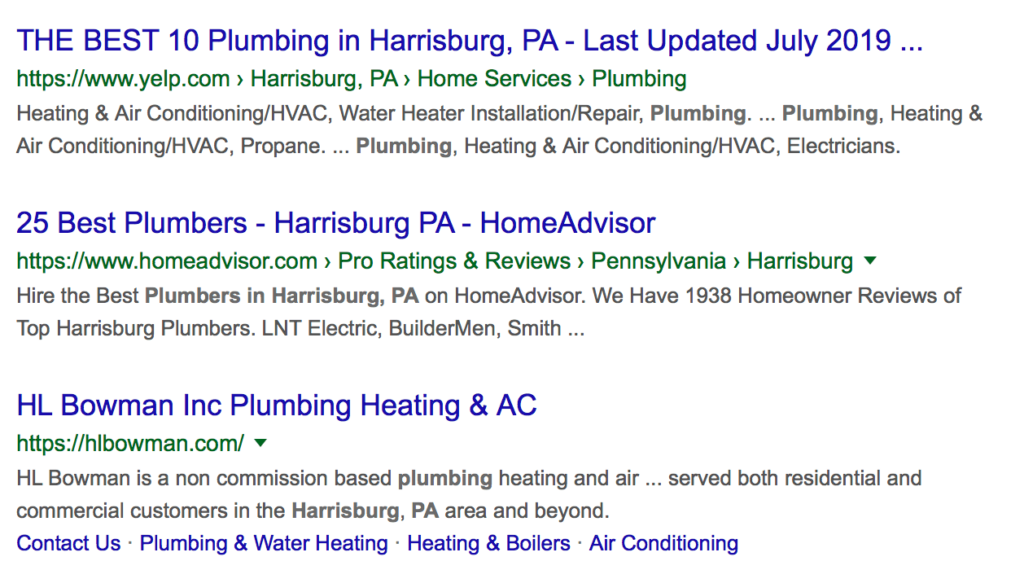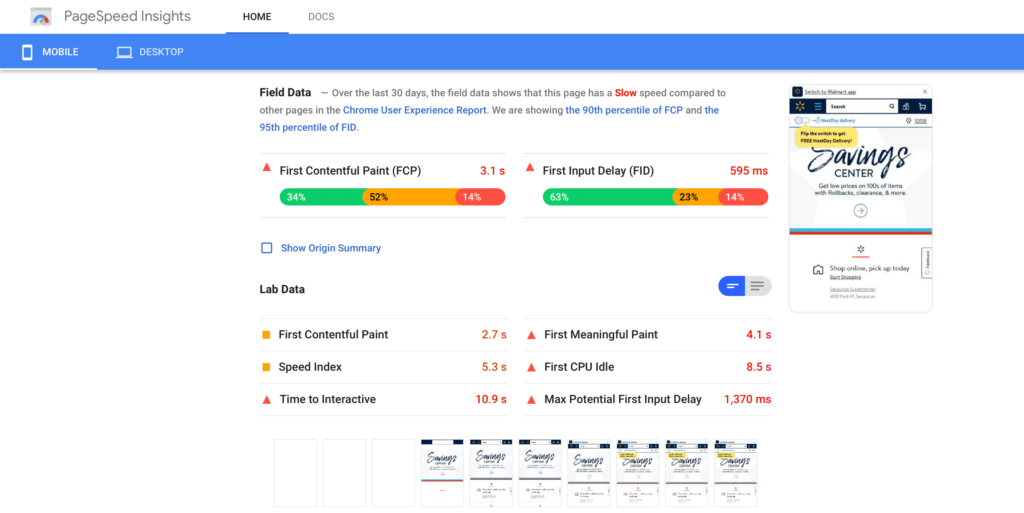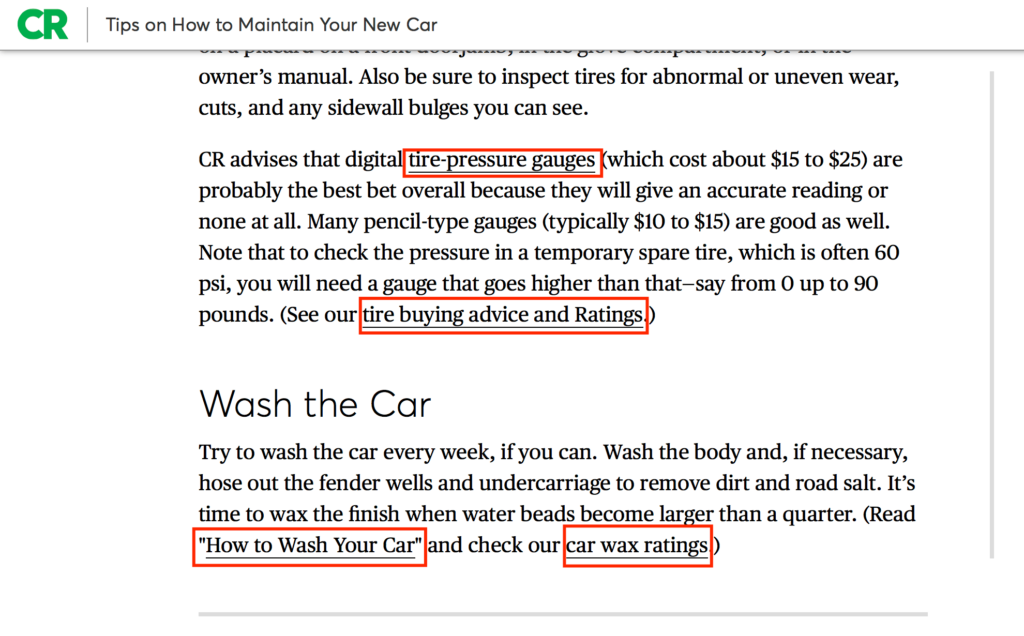-
 13 min. read
13 min. read
-
 Macy Storm
Macy Storm Content Marketing Consultant
Content Marketing Consultant
- Macy is a content marketing consultant with over five years of experience creating content for dozens of industries including home services, recreation, and education. She’s written about every marketing topic under the sun, from SEO to AI to email marketing. Her work has been featured by Search Engine Journal, HubSpot, Entrepreneur, Clutch, and more. In her free time, Macy enjoys crafting, reading comic books, and walking her dog Daisy.
Did you know that only 44% of businesses use search engine optimization (SEO)? If you haven’t already invested in this method, you’re missing a great opportunity to market to leads that are already interested in your business that have the potential to turn into conversions.
If you want to get started with SEO, you must know the core SEO principles that will help you run a successful campaign. You can find a quick answer to what your campaign needs, though, by entering your URL here.
7 SEO principles to live by (and help your campaign succeed)
On this page, we’ll provide you with seven SEO fundamentals to help you create a successful SEO campaign and improve your search engine optimization over time.
- Research and integrate keywords
- Focus on user experience
- Optimize title tags
- Optimize meta descriptions
- Publish valuable content
- Tag images
- Link internally
If you want to learn more about SEO, check out our customized SEO campaigns to see how you can create a successful strategy. If you want to learn the fundamentals of SEO, keep reading! If you’re interested in implementing an SEO campaign on your website, feel free to contact us or give us a call at 888-601-5359 to learn about our professional SEO services!
1. Keyword research and integration
Have someone explain SEO, and they’ll mention keyword research and integration as two crucial components of SEO. When users conduct searches, they use keywords to find relevant information about the topic they’re searching for. If you want these leads to find your business, you must utilize the right keywords to help them find it.
Keyword research
Keyword research is a crucial component to helping you rank in relevant search results.
You can use numerous keyword research tools, like BuzzSumo or Keyword Tool. These keyword research tools enable you to find the most appropriate terms for your campaign. When you conduct keyword research, you’ll want to focus on long-tail keywords.
Long-tail keywords contain three or more words. An example of this keyword is “plumbers in Harrisburg, PA” or “electricians near Harrisburg, PA.”

These keywords are better for your campaign than short-tail keywords, which only contain one or two words. If someone searches “electrician” or “plumber,” for example, it’s harder to determine their search intent.
They may be looking for a definition of the word, how to become one, or an actual plumber or electrician to employ for a project. Short-tail keywords don’t have a specific search intent, so it’s more challenging to drive valuable traffic. Your site is less likely to be relevant to their search query because it’s so broad.
On the other hand, you know someone who searches “electricians near Harrisburg, PA” is looking for an electrician in that area. Keyword research will help you find these long-tail keywords and reach more leads interested in your business.
Keyword integration
Once you have your keywords selected, you’ll integrate them into your site. Keyword integration is a crucial part of SEO.
If you want to rank in relevant search results for specific keywords, you must integrate them into your site content. When you integrate keywords, use them naturally in your copy. If you overuse keywords on your page, it will lead to keyword stuffing.
Google sees keyword stuffing as a negative signal, so you will risk hurting your site’s ranking if you overload your page with keywords. By integrating keywords, you’ll help your site appear in more relevant search results. It’s one of the best SEO practices for having an effective campaign that grows your business.
2. Focus on the user experience
If you want to know how to improve SEO, start by improving the user experience. User experience plays a fundamental role in SEO. Any time someone visits your website, you want them to have a positive experience and engage with your site content.
 Google takes the user experience into account when ranking your site. If people enjoy your website, they’re likely to remain on it longer – this is referred to as dwell time. When your dwell time is high, Google sees this as a positive signal that your page is relevant to the user search query.
Google takes the user experience into account when ranking your site. If people enjoy your website, they’re likely to remain on it longer – this is referred to as dwell time. When your dwell time is high, Google sees this as a positive signal that your page is relevant to the user search query.
Here are a few ways that you can improve the user experience on your site.
Improve page speed
Page speed plays an essential role in your audience’s experience on your site. Your audience doesn’t want to wait for your page to load to get the information. If it takes too long to load, your audience will leave your site and visit a competitor’s site instead.
Eighty-three percent of people expect your website to load in three seconds or less. If your site doesn’t load quick enough, you risk losing valuable traffic for your business. So, how do you improve your site’s load time?
 To start, you can use Google PageSpeed Insights to help see how long it takes for your site to load. The tool provides metrics for your load time on both desktop and mobile. Google PageSpeed Insights also provides you with optimizations you can do on your site to improve your load time.
To start, you can use Google PageSpeed Insights to help see how long it takes for your site to load. The tool provides metrics for your load time on both desktop and mobile. Google PageSpeed Insights also provides you with optimizations you can do on your site to improve your load time.

If you don’t have experience improving your load time, you can rely on page speed services from a digital marketing company.
An experienced digital marketing company, like WebFX, will help optimize your site to get it running quickly.
Simple navigation
Your navigation is an essential component of your website. When users enter your site, they want to find relevant information quickly. If your navigation is disorganized, it could lead to bad user experience.
When you set up your navigation, you should use broad category headings rather than super detailed ones. These broad headings will help you keep your content more organized by providing fewer tabs.  Underneath these broad headings, you can create smaller subcategories that help direct your audience to more specific information.
Underneath these broad headings, you can create smaller subcategories that help direct your audience to more specific information.
For example, let’s say you’re an HVAC company. You want to make it easy for people to find your air conditioning repair services. To make it easy for your audience, you can start by creating a broad “Services” category.
If people are looking for services, they will go to that tab immediately. Under the services tab, you can break up the different types of services you offer. You may want to categorize all your services by heating, ventilation, and air conditioning.
Underneath the air conditioning section, you would put your air conditioning repair services. The navigation path looks like this: Services à Air conditioning services à Air conditioning repair This path is straightforward and easy for your audience to follow to get to air conditioning repair services.
Adding visuals
Visuals are a crucial component of your site. If your audience visits your website and sees a wall of text, they will lose interest.
It’s much more engaging to look at a page that has custom graphics and images. You can put numerous types of visuals on your site. These visuals include photos, videos, and infographics.
These visuals add a point of interest for your audience that gets them to engage on your website. Visuals can also help provide your audience with the vital information they may miss when scrolling through your pages. For that reason, visuals make it extremely easy for users to skim your content, which is a massive plus for usability.
3. Optimize title tags
Title tags are a crucial component of SEO. When users search through Google, they’ll see your title tag in the search results, and matter of fact, it’s the first thing your audience sees when they find your listing. One of the most crucial SEO principles is to optimize your title tags.
Since it’s the first thing your audience sees, you want to make a good impression and show them that your page is relevant to their search query.

To optimize your title tags, you’ll start by integrating your most important keyword into your title first. You want it to appear towards the front of your title to ensure your audience sees it and knows your page is relevant to the search results. Let’s say you’re a flower shop, and you’re creating a page for the keyword “best floral arrangements.” Here are some examples of good titles that put your keyword first:
- 10 Best Floral Arrangements for Your Wedding
- Best Floral Arrangements: 10 Arrangements to Wow Your Wedding Guests
- The Best Floral Arrangements to Impress Your Wedding Guests
Each of these titles puts the vital keyword, “best floral arrangements,” first. If someone searches for this key term and sees any of these titles, they will know it’s relevant to their search query.  By optimizing your title tag, you’ll help drive more relevant leads to your business’s page.
By optimizing your title tag, you’ll help drive more relevant leads to your business’s page.
It’s one of the most critical SEO fundamentals for getting leads to click on your listing.
4. Optimize your meta description
One of the basic SEO principles, next to optimizing your title tag, is optimizing your meta description. Your meta description is another crucial component of your SEO listing that your audience looks at before clicking on your website. Your meta description is a small blurb that appears below your title tag.
This small section of text allows you to give your audience a quick preview of your page to help them determine if your page is relevant.

You only have about 150-160 characters for your description before it gets cut off. You’ll want to use these characters wisely to ensure that you’re providing your audience with additional information that’s of value to them. Similar to your title, your meta description is a sneak peek of your article.
If you have a particular sentence or two in your article that helps provide your audience with additional valuable information, you can use that in your meta description.
5. Publish valuable content for your audience
If you want to know how to improve SEO, start with creating a content marketing plan for your business. Content marketing is a crucial component of your SEO campaign. When you create content, you drive valuable traffic to your page.
This strategy also helps you keep leads on your page longer, which increases dwell time and sends a positive signal to Google. To start creating content, you’ll want to choose your format. Content comes in numerous forms, including:
- Blogs
- Videos
- Infographics
- Ebooks
- Guides
Use a variety of these formats to keep your content engaging for your audience. When you create content, focus on industry-related topics. You want to drive traffic to your content that is interested in your business.
If you aren’t writing about relevant issues, you’re going to drive traffic that’s not interested in your business.
Let’s go back to the “best floral arrangements” keyword.
Imagine that you’re a plumbing company and you see that many people are looking for floral arrangement ideas. If you write a blog post about this topic, because it’s popular, you’re going to drive traffic to your site that’s looking for floral arrangement ideas. However, this traffic isn’t relevant to your business.
People looking for information about floral arrangements aren’t going to hire a plumber. You must choose the right keywords so you can attract relevant traffic with your content.
Content marketing is an excellent opportunity for your business to share your knowledge with your audience. When you share your experience, you establish your business as an authority in your field.
It’s an excellent way for you to build trust with your audience. If you’re looking for how to improve SEO, content marketing is the solution. Content marketing is an excellent way for you to drive traffic to your site and keep leads on your page longer.
6. Tag images
When you are setting up your pages, you want to ensure that your pictures are always readable. Alt tags provide valuable details for your audience.  Alt tags are fundamental for SEO.
Alt tags are fundamental for SEO.
Google can’t understand images solely as image files. Alt tags add context to your images and help Google understand your images’ relevance to your page. There may be instances where your images don’t load on the page.
It’s important to have alt tags on your pictures, so users, and Google, know what the photo is depicting. Tagging images is one of the best SEO principles for helping Google read your site and index it.
7. Link internally
Internal linking is of one the SEO fundamentals that influence your audience’s dwell time on your page. When you link internally, you guide your audience to additional pages on topics relevant to your page. Internal links keep your audience engaged on your page.
They help guide your audience to informative pages that expand their knowledge on a topic that they’re already interested in learning. Internal linking can even lead them to learn something new! They can continue learning about different, relevant topics, all while becoming more familiar with your brand.
When you link internally, you’ll want to choose relevant anchor text. Anchor text is the text that holds the link. It helps users and search engines understand the context of your link.

As you’re looking at SEO fundamentals, don’t forget to include links internally.
It’s these fundamental SEO principles that enable you to drive successful results with your SEO campaign.
Master SEO principles with SEO pros
You don’t have to learn SEO alone. With our newsletter, Revenue Weekly, and our award-winning team of SEO pros, we make mastering SEO principles (and adapting to its changes) rewarding.
Join Revenue Weekly today to get our tips, tricks, and advice for search!
-
 Macy is a content marketing consultant with over five years of experience creating content for dozens of industries including home services, recreation, and education. She’s written about every marketing topic under the sun, from SEO to AI to email marketing. Her work has been featured by Search Engine Journal, HubSpot, Entrepreneur, Clutch, and more. In her free time, Macy enjoys crafting, reading comic books, and walking her dog Daisy.
Macy is a content marketing consultant with over five years of experience creating content for dozens of industries including home services, recreation, and education. She’s written about every marketing topic under the sun, from SEO to AI to email marketing. Her work has been featured by Search Engine Journal, HubSpot, Entrepreneur, Clutch, and more. In her free time, Macy enjoys crafting, reading comic books, and walking her dog Daisy. -

WebFX is a full-service marketing agency with 1,100+ client reviews and a 4.9-star rating on Clutch! Find out how our expert team and revenue-accelerating tech can drive results for you! Learn more
Try our free Marketing Calculator
Craft a tailored online marketing strategy! Utilize our free Internet marketing calculator for a custom plan based on your location, reach, timeframe, and budget.
Plan Your Marketing Budget
Table of Contents
- 7 SEO principles to live by (and help your campaign succeed)
- 1. Keyword research and integration
- 2. Focus on the user experience
- 3. Optimize title tags
- 4. Optimize your meta description
- 5. Publish valuable content for your audience
- 6. Tag images
- 7. Link internally
- Master SEO principles with SEO pros

SEO Success with KOA

Proven Marketing Strategies
Try our free Marketing Calculator
Craft a tailored online marketing strategy! Utilize our free Internet marketing calculator for a custom plan based on your location, reach, timeframe, and budget.
Plan Your Marketing Budget
What to read next





